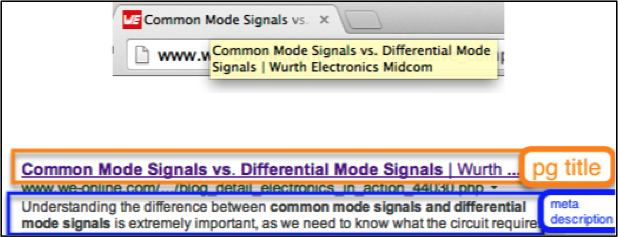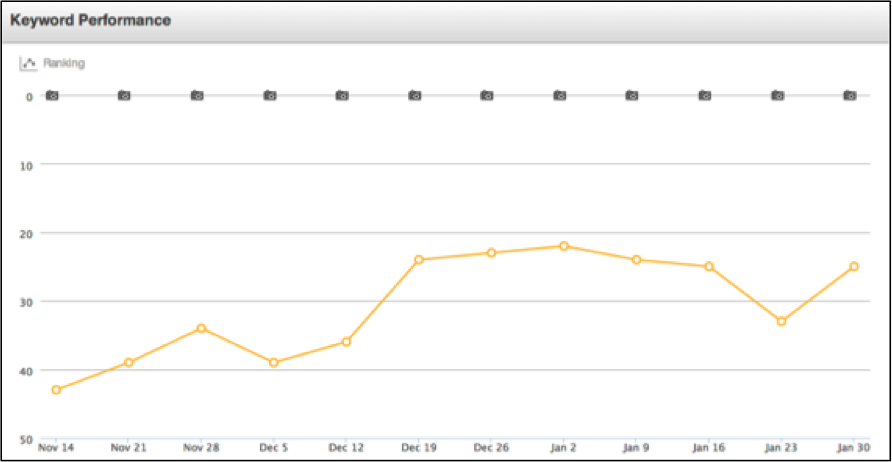1) 75% of SEO is off-page and 25% is on-page
There are two key elements to improving your SEO: attracting links and making your content relevant for the word people are searching for. These elements are known as off-page (on someone else’s site) and on-page (your site).
It’s important to first make your content relevant by including the words you are hoping to rank for in key areas of your page. This technique however only takes you so far. Secondly you want to create content others want to link to. Search engines view these links as “votes” telling the search engines that your site is a valuable one for people searching for an answer.
2) 91% of US Internet users search every month
Search traffic is thus the first place most new or potential customers will first find out about you. If you are not optimizing your site, you do not exist in their minds.
3) Page titles are the most important on-page element after content
The biggest mistake most websites make is not having an effective page title. As the second most important on-page SEO element (after relevant content), it is essential to have a targeted page title.
The page title is at the very top of your browser on the tab (screenshot is from the Chrome browser). It also is what shows up on Google when people search.

As an example of the power of page titles, one of our electronic manufacturing clients wanted to rank for the term SMPS transformer. We performed a little test and just put that word in the title of one of their pages.

In the course of a month the page went from around 50th for the term to 25th, just by editing the page title.

In addition to editing the page title, it’s important to include the keywords in the H1 text, alt tags and paragraph text on the page.
4) Persuasive meta descriptions under 155 characters increase click through rates
The meta description is the brief preview that shows up underneath a link on search engines. This gives readers an idea of what’s coming if they click. Thus, a tempting meta description will increase clicks even though it does not influence your rank in the search results.
Make your meta descriptions unique on each page. This will attract clicks depending on each searcher’s interests. In fact, Google’s own Matt Cutts noted recently that it is actually better to have no meta descriptions than to have duplicate meta descriptions.
How do you know what your best meta description is? Test it! Use Google or Facebook ads to test what copy is most appealing. Then use that text as your page’s meta description.
Just remember: Make your meta description snappy because there is a 155 character maximum before Google will cut it off with ellipses.
5) The top 5 results get 75% of the clicks
In the search engine world, the top 5 results get 75.7% of the clicks so focus your efforts on a few valuable words and build content around those terms. Don’t spread yourself too thin or you’ll find yourself the jack of all trades and master of none.
6) Google+ is the highest correlated social factor for SEO ranking
As social media has become a primary form of communication, search engines have begun to factor your social network in to the results you see. This is called “social search.”
In social search, content that has a social connection to you in some way is prioritized. A social connection could mean someone you are linked to via Facebook, Twitter, or any other major social network.
What this means is that you should connect to people who are influential on the words and topics you want to rank for. If they share, like and most importantly +1 your content on Google+, it will be more likely to show up for other searchers.
In fact Search Metrics is already measuring the presence of active social media and finding content shared socially shows up higher in search. Moz notes that Google+ is the highest correlated factor to SEO. This of course brings up the chicken and egg question: are pages that rank well shared more frequently or are pages that are shared frequently then ranked higher? There is much debate around this topic, but the end result is clear: social influences search.
Second, make a list of the keywords for which you want to rank highly. Does the content you share on social media and your blog cover those keywords? Zero in on one or two of your most desirable keywords and find ways to make content under those keywords more shareable
Wad by Wad You Can Improve Your SEO
In 1993, the single patron who pushed his wad of gum on the wall next to Unexpected Productions’ Seattle Theatresports didn’t know he was starting one of the world’s germiest tourist attractions. However, a consistent effort by dedicated gum chewers all over Seattle turned an alley wall into a tourist attraction.
You too can make your website an attraction for searchers the world over. It takes a combination of optimizing the pages you have, creating unique content that will attract links and sharing your content via social media.
It won’t happen overnight, but wad by wad, post by post, your site will continue to gain visibility until it is an attraction as unbelieveable (but less germy) than the Gum Wall in Seattle.
this is really nice .we offer best seo live project training in delhi at seo training in delhi
ReplyDeleteDigital Marketing Training in Bhopal
ReplyDeleteSEO Training in Bhopal
PHP Training in Bhopal
Website Designing & Development Training in Bhopal